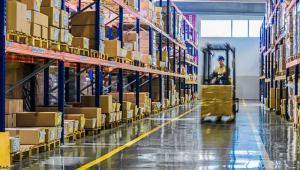Trade flows across the region are already wavering amid an increasingly sluggish global economy, depressed commodity prices and trade growth that has fallen to unprecedented levels.
Uncertainty around future trade policy, triggered largely by the protectionist proposals of US president-elect Donald Trump, is driving trade down further.
This is not only critical for Asia-Pacific because trade is the main engine for the region’s robust growth, but also because it is needed to achieve the sustainable development goals, which are estimated to cost as much as $1tn a year to deliver, said the UN.
A report, published yesterday by the UN Economic and Social Commission for Asia and the Pacific, said that despite this even some countries within the region appear to be pursuing more restrictive policies.
These include a variety of non-tariff measures and a proliferation of preferential trade agreements (PTAs), curbing momentum towards region-wide free trade. The region now accounts for almost 63% of all of the world’s PTAs, which give preferential access to certain products from participating countries by reducing, rather than abolishing, tariffs.
It warned that the prospects for trade could “change over the medium term”, a nod to the reversion to a more closed global trade system that many fear is brewing amid the rise of populist figures like Trump and others.
Shamshad Akhtar, executive secretary of ESCAP, noted that “to their credit” many Asian exporters have decoupled their economic cycles from traditional export markets like the US and the European Union.
However the report stressed that Asia-Pacific nations have an opportunity to boost trade by seeking to reduce costs. This could be done by launching electronic trading, working to take down barriers and nurturing regional value chains.
“Trade is the key driver of economic activity in Asia and the Pacific,” said Akhtar. “Even if the regional significance in the global trade scene is maintained, the fall in share of exports as a proportion of GDP from the 67.5% pre-crisis levels to 52.9% in 2015 is a cause of concern.
“The region has the potential to regain trade momentum so critical for sustainable development and lead by example, especially if we are to ensure that our future is sustainable and that our societies are more equal.”
The OECD has also called on Asian countries to work to scale up their tax revenues today, which remain well below the OECD average of 34.2% in all of the countries studied.
In the Asia edition of its regular Revenue Statistics publications, published today, the think-tank said there is still plenty of scope to improve tax systems, especially in emerging Southeast Asian economies.
The report, which covers Indonesia, Malaysia, the Philippines, Japan, Korea and also, for the first time, Singapore, said that tax-to-GDP ratios were higher in 2014 than they were in 2000 in every country apart from Singapore.
Some of the countries have only seen small increases in that time, such as the Philippines, which gained only 0.9 percentage points in the 14 years since the millennium.
Along with Malaysia, Singapore and Indonesia, the Philippines’ tax revenues were also below 17% of GDP. Japan and Korea’s were both above 24%. In other nations not covered by the OECD study, including India, Afghanistan and Myanmar, tax-to-GDP figures are in single digits, at 7%, 7.2% and 8.8% respectively.
Recent data from the Asian Development Bank also found that the majority of countries in the region, a total of 17, saw a decrease in their tax revenues since 2014.
Gambhir Bhatt, the ADB’s technical advisor for governance, told PFI that in this context it is crucial to ensure “broad governance and public sector reforms” are “pursued aggressively” to prevent adverse effects on areas like service delivery.














